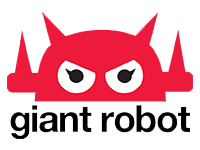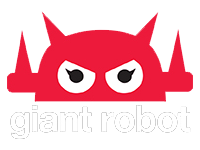Artist Interview: Mike Lee - Repose
Jennifer Bequio: In the past, you’ve participated in group and two person exhibitions here at GR2. How does it feel to have your own solo show here at GR2?
Mike Lee: I’m extremely grateful for this opportunity, but it is overwhelming. Because a majority of the pieces are smaller in scale, I'm creating work up until the opening to avoid a situation where the walls feel bare or empty. But ultimately, I realized all I can do is produce as much as I can and have faith everything with come together.
JB: Is this your first solo show? Or have you done solo shows in the past?
ML: I've mostly been a part of group shows, but yes this is my first solo show.

JB: For this show Repose, you’re creating these soft, spherical, and pillowy looking figures through shading. Have you always drawn these characters? And if not, how did your work evolve to lead you to draw these characters in a monochrome way.
ML: I only recently began to draw these particular figures. Before the characters were toy like as well as having facial features. Although it was merely 2 dots for the eyes, I still felt I was explaining too much. I wanted to leave room for the viewer to have input on how to interpret the work so I played around with elongating the proportions and kept the faces blank. I was really surprised to find the variety of emotions I was able to convey with the use of these simple forms.

JB: Looking through your Tumblr (http://mleeblog.tumblr.com), I noticed that you work extensively with pen, pencil, and paper. What originally brought you to pen and pencil? Do you use specific pens and pencils to complete your work, or do you just use any pen and pencil that’s around/available?
ML: I used to work exclusively with pencil. I loved the concept of simplicity and minimalism, so I tried to apply it every aspect of my work including the medium. I wanted to create drawings using the most fundamental tools. I started by using regular wood pencils, but I wasn't able to get as tight as I wanted. So I ended up shifting over to fine mechanical pencils and used sandpaper to sharpen the tips.
JB: I noticed that you had a post on February 4, 2016 that says, “New ballpoint drawing on wood! This will be the year of exploring various mediums & surfaces. Super excited!!” What is inspiring you to explore other mediums? And in this exploration of other mediums, do you think you’ll explore with color as well?
ML: As beautiful as pencils can be, there are limitations to the medium. The one thing I could never achieve was the full range of values. Graphite can only go so dark, and so no matter how much pressure I applied, I would hit a wall. I decided not to limit myself and see how my work would translate using other mediums such as ball point pens, inks, acrylics, oils and as well as various surfaces. As far as color, I'm definitely not opposed to it. I think i'm just waiting for a strong concept before getting into it.

JB: Seeing how highly detailed, technical, and precise your works are, I was wondering how you approach mistakes in your work? What happens when a smudge occurs, when you shade beyond the lines, or when shading is darker than intended? Do mistakes happen a lot?
ML: I usually work from top left and work my way down to avoid smudging. But graphite is very forgiving so honestly it's not something I'm too worried about. You can easily dab away with kneaded erasers, fingers or palm. But if a biggie happens, there's nothing that and the Sakura Electric Eraser can't get rid of.

JB: When looking through your Tumblr, I noticed that for the pieces Dyckman St and 37 N Broadway (above) that you begin with shading the areas first, and then you work to add the outlines of the figures afterwards. Can you walk us through the process of your work? And how long does it typically take to complete one piece?
ML: Before creating these environments, the drawing goes through an intense design process using photoshop. It begins with a rough thumbnail, then I create a really tight line drawing as well as a full lighting study. Only after I figure out exactly what the final piece will look like, do I print out the design and use a light table to guide the original piece. The "shading" is a base tone I lay down just to have a starting point. By the end, although I feel I've created the piece 3 or 4 times, I found it to be the most time efficient method. Because pieces like 37 N Broadway are larger and took about 5-8 months to complete, I leave the spontaneous aspect in the design stage. But when creating the actual drawing, I plug in my headphones and just get to work.
JB: For these same pieces, Dyckman St and 37 N Broadway, can you talk a little about why you chose to present these works isometrically? How is perspective and lighting used in your works?
ML: I always found myself to be an observer and this vantage point was the most objective way I found to describe these spaces. I wanted the viewer to be able to clearly see every corner and every object without perspective getting in the way. As far as lighting, I tried to capture a specific moment within the day where I felt most at peace.

JB: Where do you see your works going in the future?
ML: My work and my life are completely intertwined. Although I have a very structured process when creating the work at hand, I never really know what's coming next. I do my best to keep an open mind, work hard, and say yes to every opportunity. And wherever life decides to takes me that's where my work will go.





